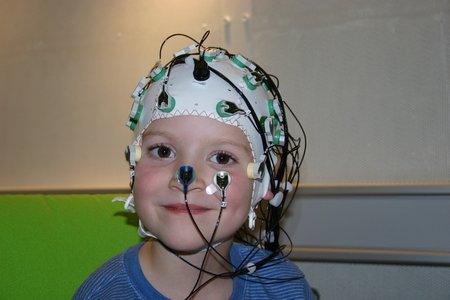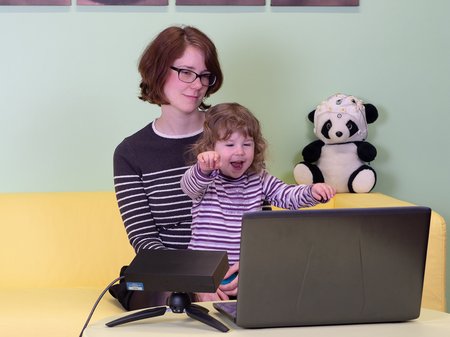Children´s studies
The ability to focus on relevant information and to ignore irrelevant information is essential for learning success and academic performance. Our vision is to enhance the basic understanding of attention development throughout childhood.
We are particularly interested in how emotion, motivation and mobile digital media use influence attention. We also investigate attention in children suffering from attention disorders, which are of high prevalence and associated with learning disorders.
What we measure
Response times and hits
When we solve a problem, we can be distracted by background noise which affects our performance. Therefore, in some studies, we measure the speed and accuracy of responses to a particular task when disruptive events occur simultaneously.
Electroencephalography (EEG)
We measure brain electrical activity - which is always present - with electrodes mounted on a specially made hood while the child is solving a task, watching a movie or playing. Certain patterns in brain activity allow statements to be made about cognitive processes, such as whether a person is temporarily distracted.
Eye movements and pupil size
Where people look, how long they look at something and how their pupil size changes can be inferred from attention and learning processes. Eye movements and pupil size are recorded with a special camera that is placed at some distance in front of the child while it is solving a problem.
Contact
Dunja Kunke
E-Mail: kinderstudien(at)lin-magdeburg.de
Tel: 0391 626 393431 (AB)



